In ABAP, I have a pretty large internal table, say 31,000 rows. What's the shortest and most efficient way to split that into multiple smaller tables of fixed size, say 1,000 rows each?
Naive way would be:
DATA lt_next_package TYPE tt_table_type.
LOOP AT it_large_table INTO DATA(ls_row).
INSERT ls_row INTO TABLE lt_next_package.
IF lines( lt_next_package ) >= lc_package_size.
INSERT lt_next_package INTO TABLE rt_result.
CLEAR lt_next_package.
ENDIF.
ENDLOOP.
IF lt_next_package IS NOT INITIAL.
INSERT lt_next_packge INTO TABLE rt_result.
ENDIF.
That works and is rather efficient, but looks cumbersome, esp. the don't-forget-the-last-package section at the very end. I believe there must be a better way to do this with the newer ABAP mesh paths and table expressions, but so far couldn't come up with one.
